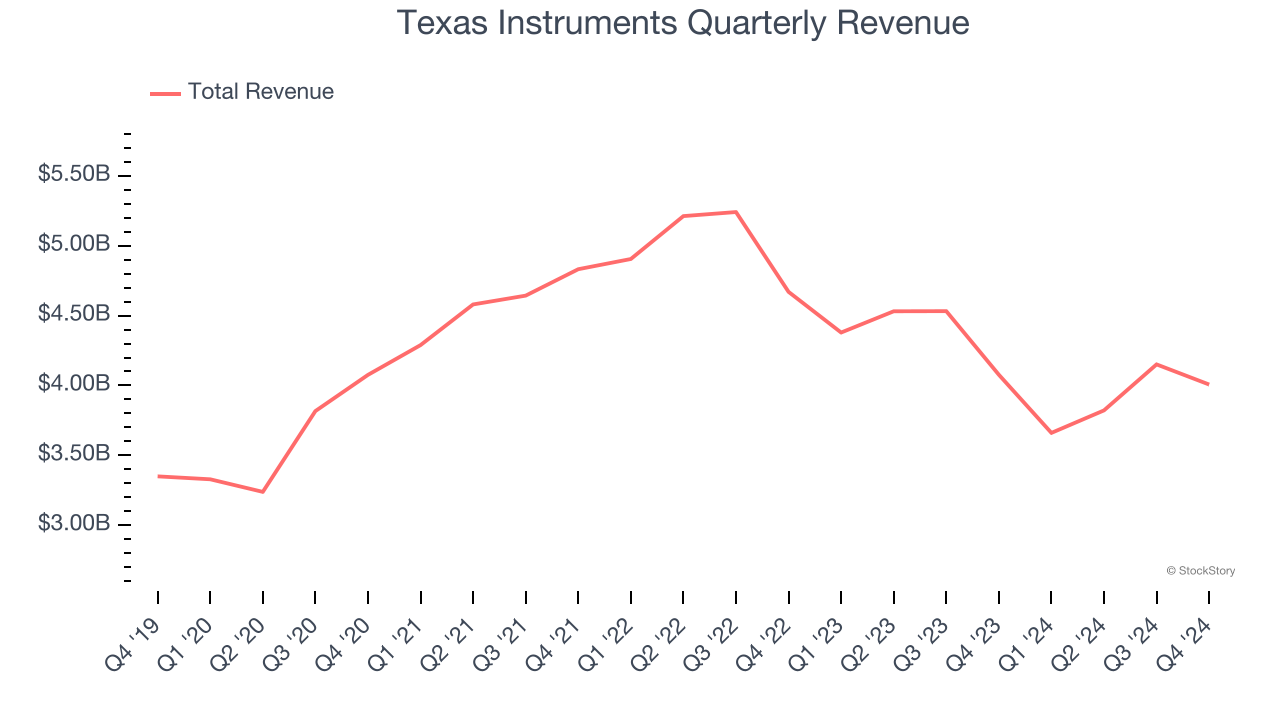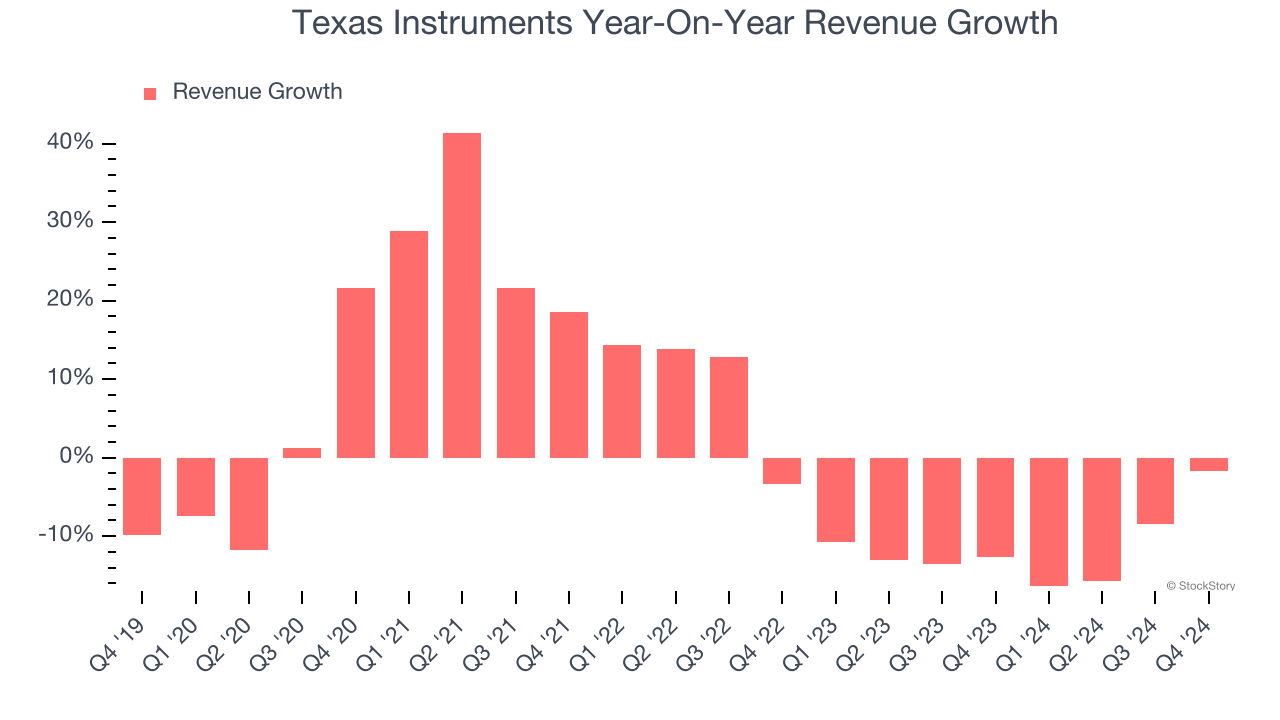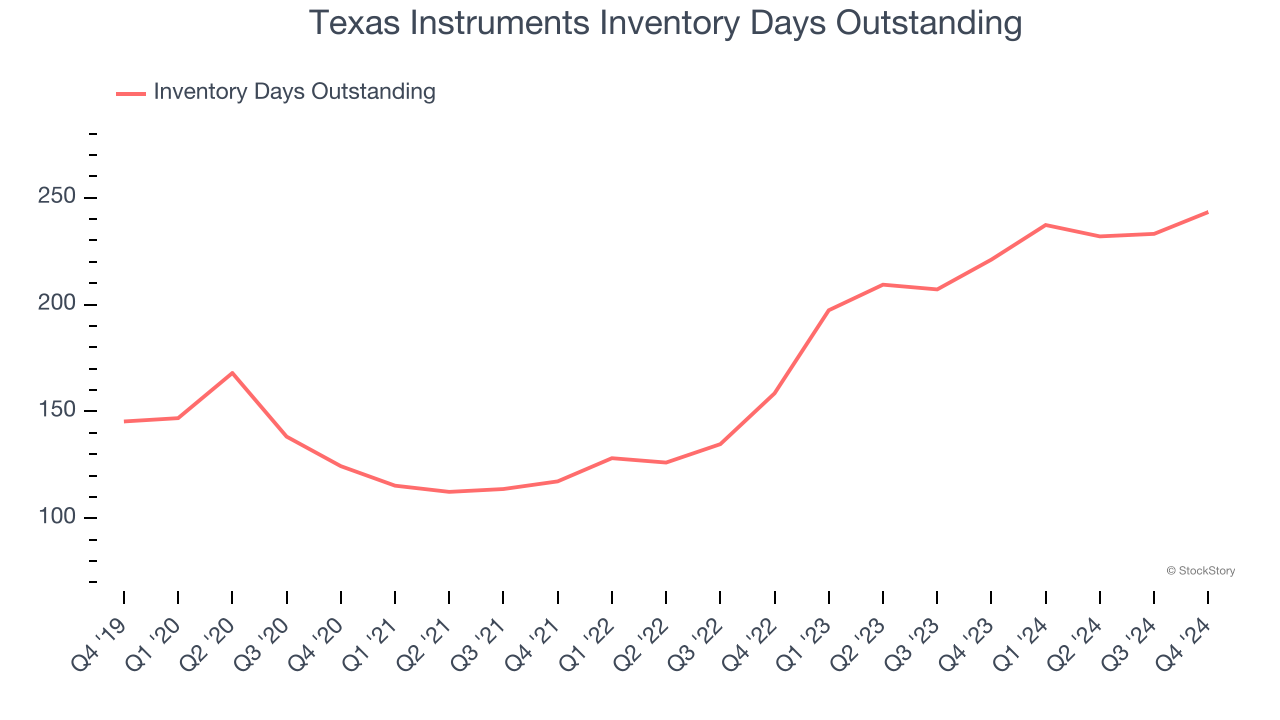
Analog chip manufacturer Texas Instruments (NASDAQ: TXN) reported Q4 CY2024 results exceeding the market’s revenue expectations, but sales fell by 1.7% year on year to $4.01 billion. Guidance for next quarter’s revenue was better than expected at $3.9 billion at the midpoint, 1.3% above analysts’ estimates. Its GAAP profit of $1.30 per share was 8.3% above analysts’ consensus estimates.
Is now the time to buy Texas Instruments? Find out by accessing our full research report, it’s free.
Texas Instruments (TXN) Q4 CY2024 Highlights:
- Revenue: $4.01 billion vs analyst estimates of $3.87 billion (1.7% year-on-year decline, 3.5% beat)
- Adjusted EPS: $1.30 vs analyst estimates of $1.20 (8.3% beat)
- Adjusted EBITDA: $1.87 billion vs analyst estimates of $1.76 billion (46.7% margin, 6.5% beat)
- Revenue Guidance for Q1 CY2025 is $3.9 billion at the midpoint, above analyst estimates of $3.85 billion
- EPS (GAAP) guidance for Q1 CY2025 is $1.05 at the midpoint, missing analyst estimates by 10%
- Operating Margin: 34.4%, down from 37.6% in the same quarter last year
- Free Cash Flow Margin: 20.1%, up from 19% in the same quarter last year
- Inventory Days Outstanding: 243, up from 233 in the previous quarter
- Market Capitalization: $179.8 billion
Company Overview
Headquartered in Dallas, Texas since the 1950s, Texas Instruments (NASDAQ: TXN) is the world’s largest producer of analog semiconductors.
Analog Semiconductors
Demand for analog chips is generally linked to the overall level of economic growth, as analog chips serve as the building blocks of most electronic goods and equipment. Unlike digital chip designers, analog chip makers tend to produce the majority of their own chips, as analog chip production does not require expensive leading edge nodes. Less dependent on major secular growth drivers, analog product cycles are much longer, often 5-7 years.
Sales Growth
A company’s long-term performance is an indicator of its overall quality. While any business can experience short-term success, top-performing ones enjoy sustained growth for years. Unfortunately, Texas Instruments’s 1.7% annualized revenue growth over the last five years was sluggish. This was below our standards and is a tough starting point for our analysis. Semiconductors are a cyclical industry, and long-term investors should be prepared for periods of high growth followed by periods of revenue contractions.

We at StockStory place the most emphasis on long-term growth, but within semiconductors, a half-decade historical view may miss new demand cycles or industry trends like AI. Texas Instruments’s history shows it grew in the past but relinquished its gains over the last two years, as its revenue fell by 11.6% annually. 
This quarter, Texas Instruments’s revenue fell by 1.7% year on year to $4.01 billion but beat Wall Street’s estimates by 3.5%. Company management is currently guiding for a 6.5% year-on-year increase in sales next quarter.
Looking further ahead, sell-side analysts expect revenue to grow 9.6% over the next 12 months, an improvement versus the last two years. This projection is above average for the sector and implies its newer products and services will catalyze better top-line performance.
Software is eating the world and there is virtually no industry left that has been untouched by it. That drives increasing demand for tools helping software developers do their jobs, whether it be monitoring critical cloud infrastructure, integrating audio and video functionality, or ensuring smooth content streaming. Click here to access a free report on our 3 favorite stocks to play this generational megatrend.
Product Demand & Outstanding Inventory
Days Inventory Outstanding (DIO) is an important metric for chipmakers, as it reflects a business’ capital intensity and the cyclical nature of semiconductor supply and demand. In a tight supply environment, inventories tend to be stable, allowing chipmakers to exert pricing power. Steadily increasing DIO can be a warning sign that demand is weak, and if inventories continue to rise, the company may have to downsize production.
This quarter, Texas Instruments’s DIO came in at 243, which is 75 days above its five-year average, suggesting that the company’s inventory has grown to higher levels than we’ve seen in the past.

Key Takeaways from Texas Instruments’s Q4 Results
We liked that Texas Instruments beat analysts’ revenue and EPS expectations this quarter. On the other hand, its EPS guidance for next quarter fell short of expectations. Adding to the negative was the fact that inventory levels increased. Overall, we think this was a mixed quarter with guidance weighing on shares. The stock traded down 3.8% to $192.95 immediately after reporting.
So do we think Texas Instruments is an attractive buy at the current price? We think that the latest quarter is only one piece of the longer-term business quality puzzle. Quality, when combined with valuation, can help determine if the stock is a buy. We cover that in our actionable full research report which you can read here, it’s free.






